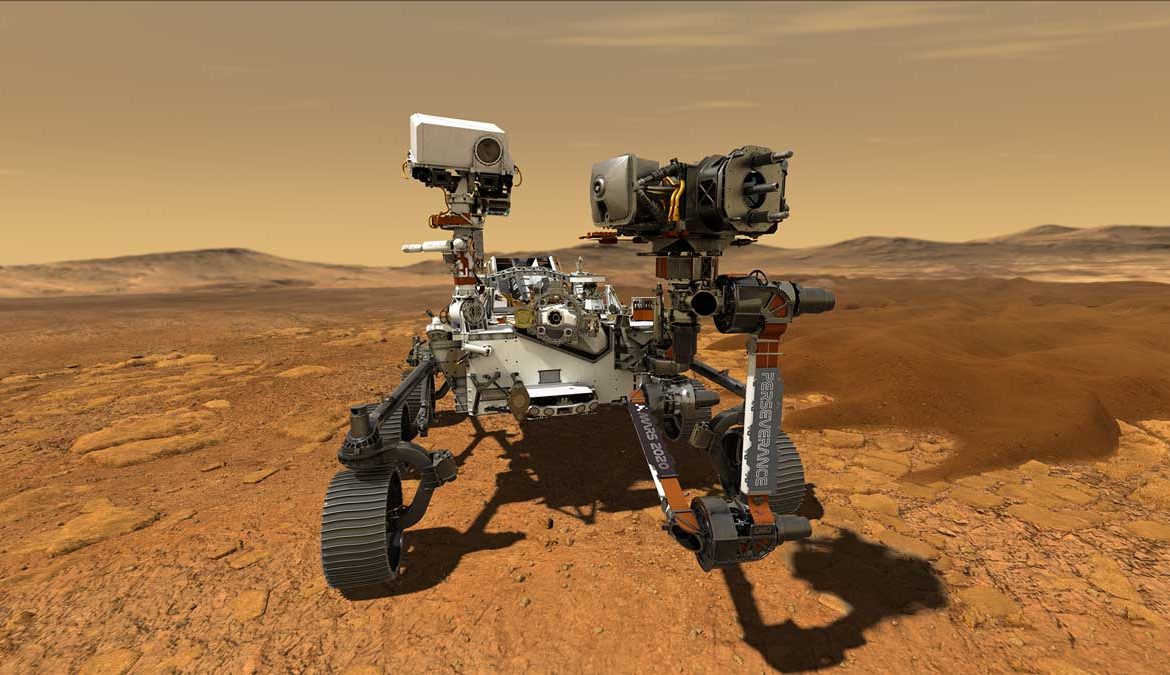First Rock Sample Obtained from Mars
NASA’s Perseverance mission hopes to collect more

On September 6th, the North American Space Agency’s Perseverance rover obtained the first sample of Mars rock from Jezero Crater, which NASA hopes to retrieve in the future for further study. When it arrives on Earth, the rock will become the first object humans have successfully taken from another planet. It will be many years before the sample can be retrieved and studied for evidence of life on Mars, but this core may be the crucial step in finding that evidence.
The rock core was taken using the Perseverance rover’s Sampling and Caching system, which has over 3000 moving parts and is the most complex system ever sent into space. Drilling started on September 1 and resulted in a thin core obtained from a flat gray rock nicknamed ‘Rochette.’ The core was named Sample 266 and stored in an airtight titanium tube. NASA hopes to retrieve it during a future mission through the Mars Sample Return program, which is a proposed joint initiative with the European Space Agency. As of right now, however, there is no timeline on when Sample 266 will return to Earth.
The sample was obtained from Jezero Crater, a now-dry lake and delta system that has held water at least two times in the history of the planet. The rover is in the crater’s fan-shaped delta, where clay has been found. Since clay only forms in the presence of water, this confirms the area was once a lake. The area is similar in geology to Earth’s own Mississippi delta, where microbial life can be found just by putting the clay on its banks under a microscope. NASA hopes that by studying the material of the core, they will find evidence that the same microbial life once existed on Mars.
The Perseverance rover (as part of the Mars 2020 mission) is the tenth successful mission to land on Mars out of eleven successful missions worldwide and more than fifty missions sent to Mars total. It launched on July 30, 2020 and arrived on Mars on February 18, 2021 without any of the issues of rocket failure and trajectory miscalculation that tend to plague Mars missions. The Perseverance rover is the most sophisticated yet, with $2.2 billion worth of technology packed into a rover not much larger than a car. Among its new technologies are cameras and microphones sending live footage of Mars directly to NASA’s website for the public to view, and an arm scientists can use to manipulate objects from their base in Pasadena, California, 396 million kilometers away. Another instrument is the Ingenuity helicopter, a small robotic helicopter meant to obtain footage of the planet’s surface from a higher angle, and the first controlled device ever to fly on another planet. Perseverance is not alone on the surface of Mars: it is one of four current missions on the planet. The Mars missions closest to the Perseverance rover are NASA’s Curiosity rover and the Chinese Zhurong rover, which also arrived on Mars earlier this year.
The primary goal of the Perseverance mission is astrobiological: to discover if life ever existed on Mars. If there was once microbial life in Jezero Crater, Sample 266 may help the Perseverance realize that mission, once the core is brought back to Earth. The secondary goals of the mission are characterizing the climate and geology of Mars, with the hope of preparing for human exploration. For the 220-odd sols it has been on Mars (a sol is a Martian day, 26 hours long compared to our 24), it has travelled less than 3 kilometers. Once Perseverance has finished exploring the delta area, which NASA estimates will take about a year, it will explore the dunes covering the shoreline of Jezero’s now-dry lake.
Jezero Crater was first brought to the attention of NASA by researchers at Brown University in 2015, who observed the crater was shallower than a crater of its size should be and hypothesized it had once been a lake filled partially in with sediment. It was named after a small town in Bosnia and Herzegovina, and the word ‘Jezero’ means ‘lake’ in most Slavic languages. At 45 kilometers wide, it exists as a smaller, newer, crater inside the massive Isidis Planitia, a large plain formed from a crater larger than Quebec. The Perseverance rover’s original landing spot was named the Octavia E. Butler landing site after the infamous science fiction author. As the Perseverance rover explores, many smaller geographical features are being named after features in Canada’s own Yellowknife Bay or using words from the Navajo language. The crater was chosen for the Mars 2020 mission after a 5-year process where as many as 60 landing sites were considered. Eventually, Jezero was picked in the hopes that evidence of life could be found there.